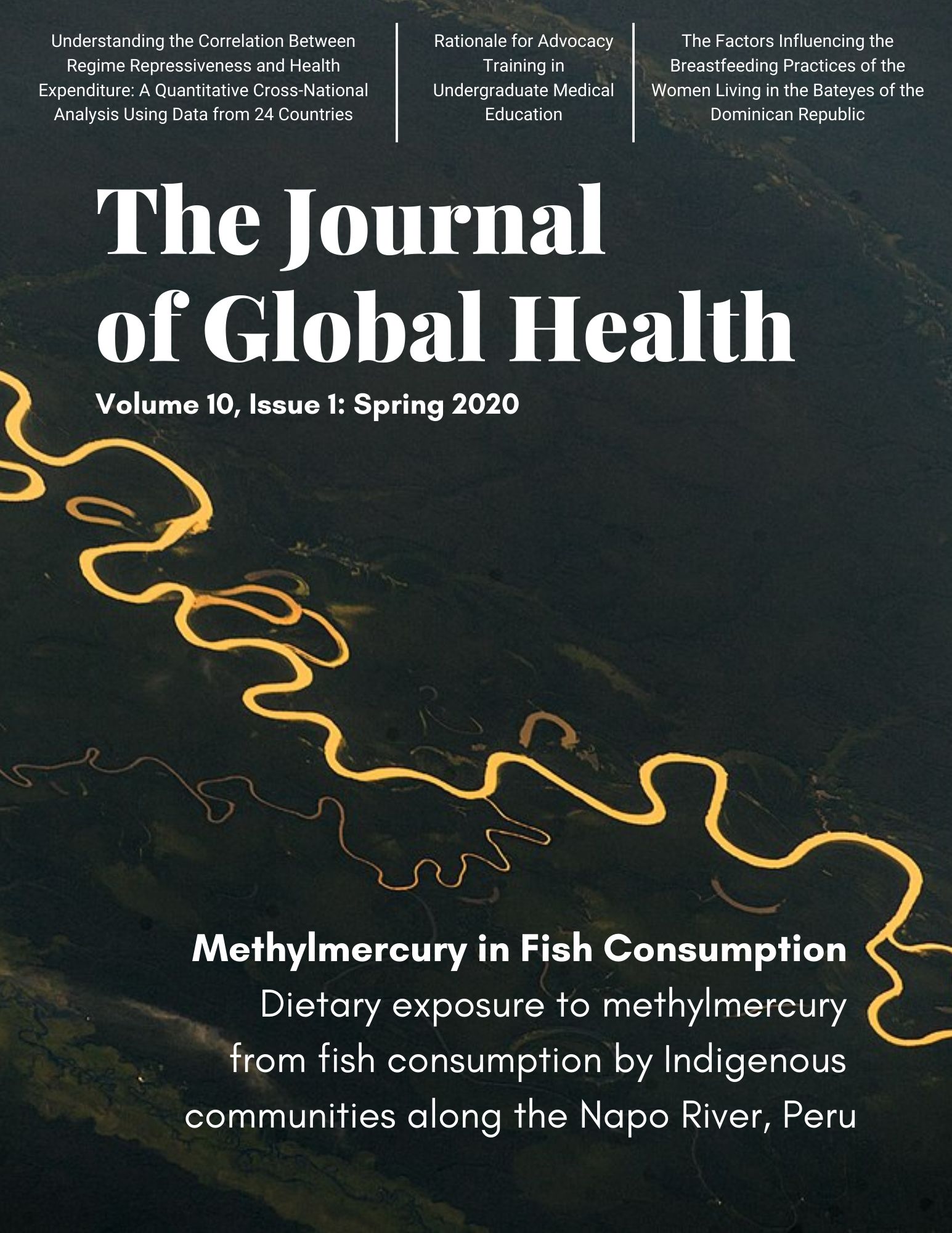Dietary exposure to methylmercury from fish consumption by Indigenous communities along the Napo River, Peru
Main Article Content
Abstract
Recently in the Peruvian Amazon, there has been increased concern regarding exposure to the neurotoxin methylmercury (MeHg) through fish consumption.
Objective: To measure local Indigenous communities’ methylmercury exposure secondary to consumption of the most commonly eaten fish species, and assess if weekly methylmercury exposure by women of reproductive age (15 – 49 years) surpassed established tolerable weekly intake values for this vulnerable population.
Methods: The team surveyed households, by means of a convenience sample, to establish the five most commonly consumed fish, the fishes’ average household feeding capacity, as well as the average total fish length. We sampled fish in the region sourced from local fishermen, and analysed these tissue samples for methylmercury levels to calculate risk exposure. A limitation was using a convenience sample for the dietary survey, which could introduce the risk of low generalizability to the population. Such a risk is low in this situation, however, as household characteristics are homogenous.
Results: A total of 205 fish representing 19 different species were sampled. The median mercury concentration in the 9 most commonly–consumed fish species was < 0.073 mg/kg ww. The highly carnivorous chambira (H. scomberoides) was the only exception, with a median mercury concentration of 0.30 mg/kg ww. Total weekly methylmercury exposure weighted by species–specific consumption frequencies for local women of reproductive age (15 – 49 years) was 0.635 g/kg bw/week. This is less than the most conservative tolerable weekly intake value of 0.70 g/kg bw/week, as established by international health agencies.
Conclusions: Given low exposure to MeHg and the reliance of fish as a primary protein source, it was concluded that it is reasonably plausible the benefits of fish consumption at the observed rates outweigh the risks of methylmercury poisoning in this population. We do caution however, that young children and women of child–bearing age might benefit from choosing fish other than chambira wherever possible.
Article Details

This work is licensed under a Creative Commons Attribution 4.0 International License.

